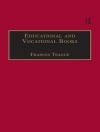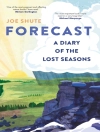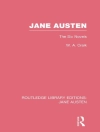‘The Girl of the Period, and Other Social Essays’ in 2 volumes is a collection of essays upon various social subjects written by the British journalist Eliza Lynn Linton, who was a severe critic of early feminism. Her most famous essay on this matter, The Girl of the Period, was published in Saturday Review in 1868 and was a vehement attack on feminism. Linton is a leading example of the fact that the fight against votes for women was not only organised by men. This carefully crafted e-artnow ebook is formatted for your e Reader with a functional and detailed table of contents.
Volume 1:
The Girl of the Period
Modern Mothers
Modern Mothers
Paying One’s Shot
What is Woman’s Work?
Little Women
Ideal Women
Pinchbeck
Affronted Womanhood
Feminine Affectations
Interference
The Fashionable Woman
Sleeping Dogs
Beauty and Brains
Nymphs
Mésalliances
Weak Sisters
Pinching Shoes
Superior Beings
Feminine Amenities
Grim Females
Mature Sirens
Pumpkins
Widows
Dolls
Charming Women
Apron-strings
Fine Feelings
Sphinxes
Flirting
Scramblers
Flattery
La Femme Passée
Spoilt Women
Dovecots
Bored Husbands
Volume 2:
Gushing Men
Sweet Seventeen
The Habit of Fear
Old Ladies
Voices
Burnt Fingers
Désœuvrement
The Shrieking Sisterhood
Otherwise-minded
Limp People
The Art of Reticence
Men’s Favourites
Womanliness
Something to Worry
Sweets of Married Life
Social Nomads
Great Girls
Shunted Dowagers
Privileged Persons
Modern Man-haters
Vague People
Arcadia
Strangers at Church
In Sickness
On a Visit
Drawing-room Epiphytes
The Epicene Sex
Women’s Men
Hotel Life in England
Our Masks
Heroes at Home
Seine-fishing
The Discontented Woman
English Clergymen in Foreign Watering-places
Old Friends
Popular Women
Choosing or Finding
Local Fêtes
Over de auteur
Eliza Lynn Linton (1822-1898) was the first female salaried journalist in Britain, and the author of over 20 novels. Despite her path breaking role as an independent woman, many of her essays took a strong anti-feminist slant. She was a constant contributor to the St James’s Gazette, the Daily News and other leading newspapers, and her 1864 guide to The Lake Country still bears reading for its tart comments on the tourist rituals of the Victorians.












